Innisfree Jeju House (이니스프리 제주하우스)
7.6Km 2024-03-20
23, Sinhwayeoksa-ro, Andeok-myeon, Seogwipo-si, Jeju-do
Innisfree is a natural brand that embodies the natural beauty of clean Jeju Island. Innisfree Jeju House sells Innisfree cosmetics, brunch and drinks inspired by Jeju Island. Aromatic oils with the scents of peony, cedar, and birch, as well as body cleansers, hand washes, and mask packs are ideal for gifts. Their signature menu is Haenyeo Basket Brunch that includes rice balls and deep-fried shrimp. Hallabong pin seom cake (Hallabong Island Cake), Oreum seom cake (Oreum Island Cake) are also favorites among patrons. In addition, they offer soap making kits, so that customers can make their own soap.
Osulloc - Jeju Branch [Tax Refund Shop] (오설록 제주)
7.6Km 2024-04-18
15, Sinhwayeoksa-ro, Andeok-myeon, Seogwipo-si, Jeju-do
-
Innisfree Jeju House (이니스프리 제주하우스)
7.6Km 2024-11-26
425 Sinhwayeoksa-ro, Andeok-myeon, Seogwipo-si, Jeju-do
Innisfree is a natural brand that embodies the natural beauty of clean Jeju Island. At Innisfree Jeju House, visitors can experience everything about the brand with a variety of activities that satisfy the five senses, as well as spending a relaxing time surrounded by the beautiful nature on Jeju Island.
Innisfree Jeju House was built to preserve the natural environment of the area. Visitors can feel as if they have become part of nature while they enjoy Innisfree's cosmetics made with quality ingredients harvested from Jeju, as well as organic food made with fresh local ingredients.
O'sulloc Tea Museum (오설록 티뮤지엄)
7.6Km 2024-11-14
15 Sinhwayeoksa-ro, Seogwipo-si, Jeju-do
O'sulloc Tea Museum, located next to O'sulloc's Seogwang Tea Planation in Jeju, was opened by Amore Pacific in 2001 with the aim of introducing and spreading Korean teas and the traditional tea culture of Korea. The museum is a cultural space where the West and the East, and modernity and tradition coexist in harmony. The museum has a tea gallery, eco-friendly rest area, and a cafe where visitors can enjoy a variety of tasty tea-based desserts.
Jinmi Myeongga (진미명가)
7.6Km 2025-05-20
167 Sagyenam-ro, Andeok-myeon, Seogwipo-si, Jeju-do
Jinmi Myeongga, under the ownership of Chef Kang Chang-gun, a saw-edged perch maestro, offers an extensive menu of over 30 dishes derived from a single saw-edged perch. Established in 1983, it has become a favored dining spot for Korean presidents and global leaders. Guests ordering Jeju's natural saw-edged perch are treated to hoe (raw fish), ppyeo jiriguk (bone fish soup), and an assortment of side dishes, where the hoe is noted for its chewiness and the fish soup for its rich flavor. It's advisable to make a reservation before visiting.
Sanbangsan Mountain (Jeju) (산방산(제주))
7.6Km 2024-03-12
Andeok-myeon, Seogwipo-si, Jeju-do
+82-64-794-2940
Sanbangsan Mountain, meaning "mountain with a cave," is home to Sanbanggulsa Temple, a small temple located at the foot of the mountain where a Buddha statue is enshrined. According to Jeju mythology, it is said that the grandmother deity, Seolmundae Halmang, tossed aside a rock from Hallasan's summit, forming this mountain. Standing at 395 meters above sea level on the southwestern coast of Jeju Island, Sanbangsan Mountain boasts vibrant fields of mustard flowers in spring, creating a picturesque view against the backdrop of the mountain.
Namgyeongmirak (남경미락)
7.6Km 2021-03-24
190-3, Sagyenam-ro, Seogwipo-si, Jeju-do
+82-64-794-0055
This is a restaurant where you can eat fresh Jeju Jayeonsan hoe (sliced raw wild fish). This restaurant's signature menu is raw sliced sawedged perch. This Seafood restaurant is located in Seogwipo-si, Jeju-do.
Yongmeorihaean Coast (용머리해안)
7.6Km 2025-03-31
28 Sagyenam-ro 216beon-gil, Andeok-myeon, Seogwipo-si, Jeju-do
+82-64-760-6321
Yongmeorihaean Coast is a hydrovolcano rocky shore formed by the accumulation of volcanic debris erupted from three craters under the sea. The coastal cliffs look like a dragon's head ('Yongmeori') due to long periods of sedimentation and erosion. The oddly shaped cliffs created by the waves provide a magnificent scene. The shore platform by the sea serves as a walking trail. Along the road down to the seashore is the Hamel Monument, in remembrance of Hamel who drifted to this place.
Sagyehaebyeon Beach (사계해변)
7.7Km 2024-02-22
2147-35 Sagye-ri, Andeok-myeon, Seogwipo-si, Jeju-do
Sagyehaebyeon Beach is located at the foot of Sanbangsan Mountain. Created by wind, waves, and the geological features of the sedimentary layers in Hwasun-ri, the large and small marine potholes look like craters on the moon. Due to the geographical characteristics, the scenery is more beautiful if seen at low tide.
Sanbanggulsa Grotto - Jeju (산방굴사(제주))
7.7Km 2022-11-14
218-12 , Sanbang-ro, Seogwipo-si, Jeju-do
+82-64-794-2940
It is said that the peak of Hallasan Mountain where Baekrokho Lake now exists was taken off and thrown away, which then became Sanbangsan Mountain. The myth describes how unlike other mountains on Jejudo Island, this mountain does not have a crater. The 5m-high rock cave at the cliff on the southwest side of the mountain was originally called Sanbanggul Cave, but it is called a temple now because it possesses a Buddhist statue.
This is where monk Hye-Il (964~1053) had lived during the Goryeo dynasty (918~1392)
Inside the cave, you can see Marado Island and the Dragon Head Coast. You can also see small ponds being made by the water drops that fall from the ceiling all through the year. The plant zone on a cliff of Sanbangsan Mountain is also designated as a natural monument. It is the only place on Jejudo Island where island boxwoods grow. On the Dragon Head Coast is the Hamel Memorial Monument.

![Osulloc - Jeju Branch [Tax Refund Shop] (오설록 제주)](http://tong.visitkorea.or.kr/cms/resource/72/2887672_image2_1.jpg)
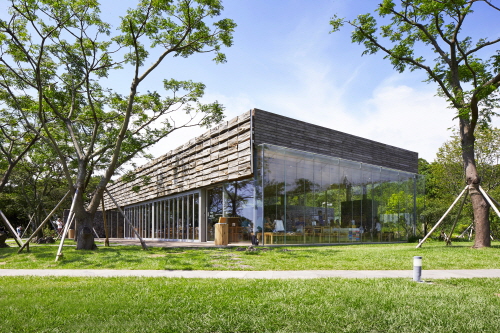
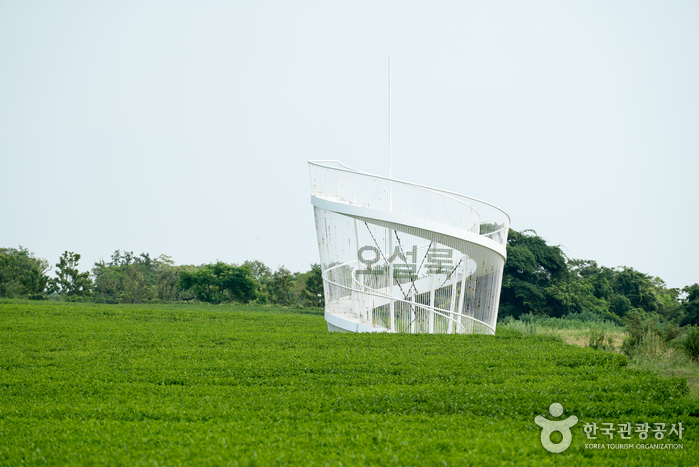
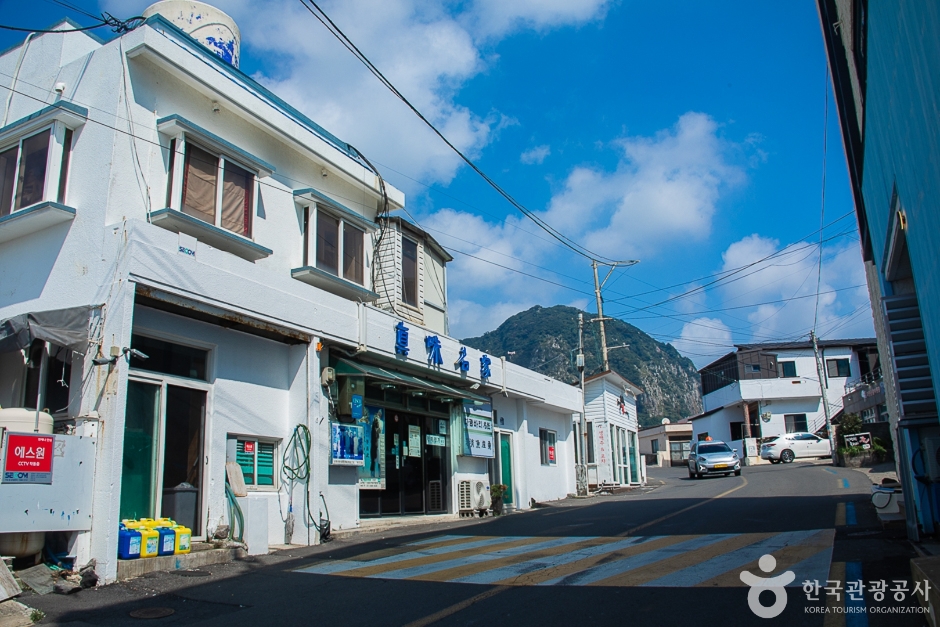
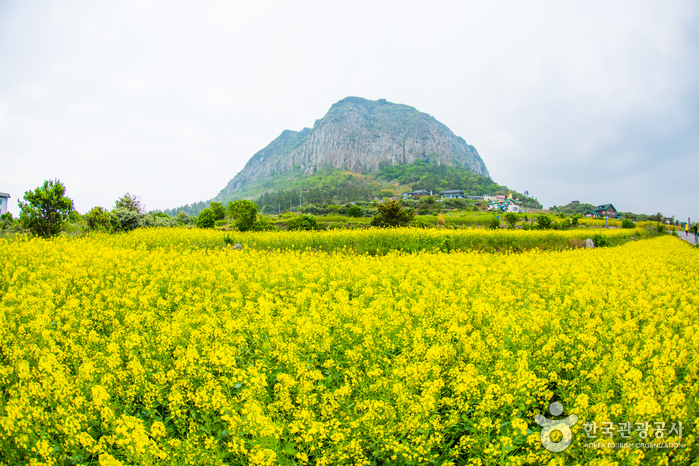
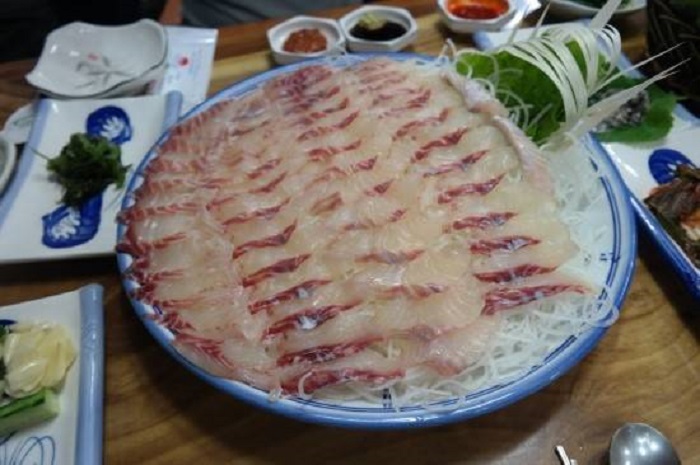
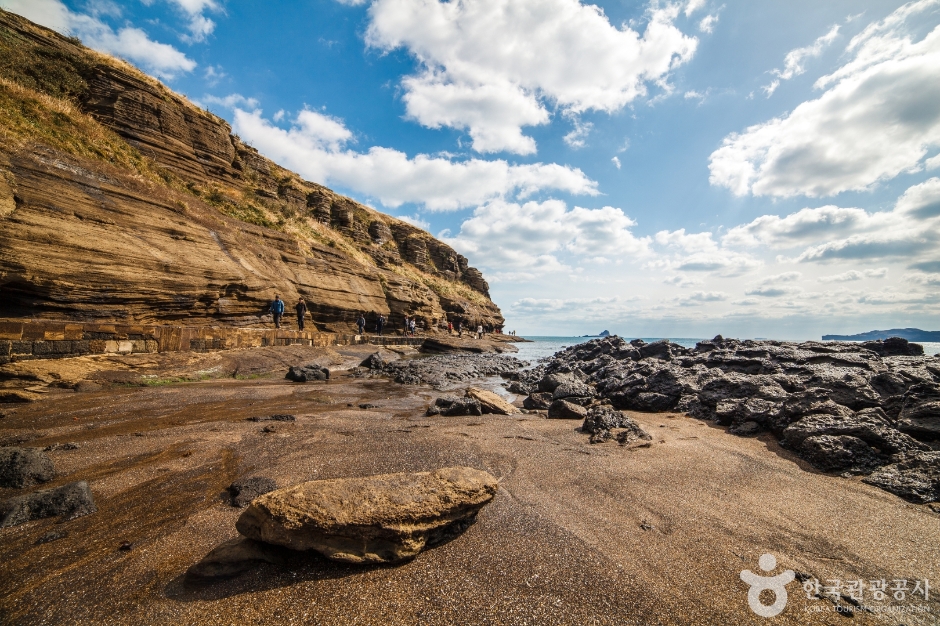
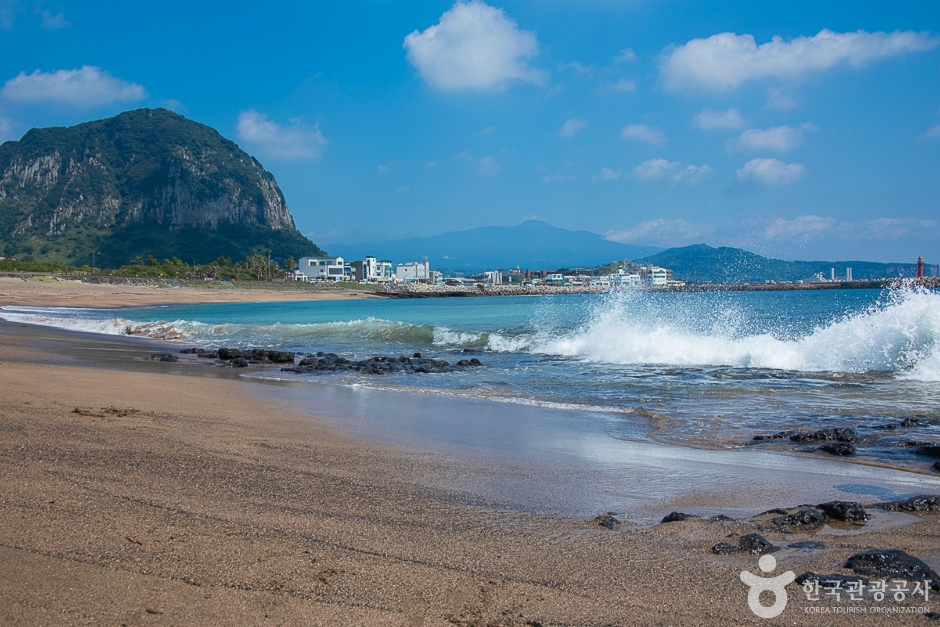
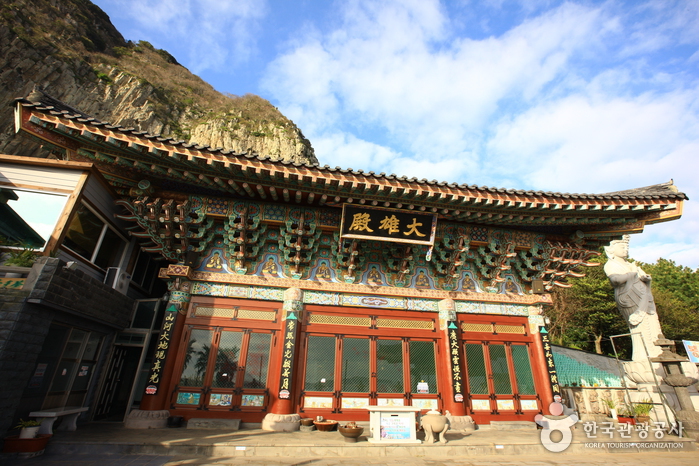
 English
English
 한국어
한국어 日本語
日本語 中文(简体)
中文(简体) Deutsch
Deutsch Français
Français Español
Español Русский
Русский